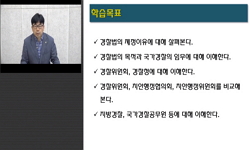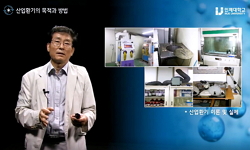Background: Fish and fishery products (FFPs) unintentionally contaminated with various environmental pollutants are major exposure pathways for humans. To protect human health from the consumption of contaminated FFPs, it is essential to develop a sys...
http://chineseinput.net/에서 pinyin(병음)방식으로 중국어를 변환할 수 있습니다.
변환된 중국어를 복사하여 사용하시면 됩니다.
- 中文 을 입력하시려면 zhongwen을 입력하시고 space를누르시면됩니다.
- 北京 을 입력하시려면 beijing을 입력하시고 space를 누르시면 됩니다.

수산생물 중 유해물질의 인체 노출 및 위해평가 시스템 개발 = Development of Human Exposure and Risk Assessment System for Chemicals in Fish and Fishery Products
한글로보기https://www.riss.kr/link?id=A107889075
- 저자
- 발행기관
- 학술지명
- 권호사항
-
발행연도
2021
-
작성언어
-
- 주제어
-
KDC
539
-
등재정보
KCI우수등재
-
자료형태
학술저널
- 발행기관 URL
-
수록면
454-461(8쪽)
-
KCI 피인용횟수
0
- 제공처
-
0
상세조회 -
0
다운로드
부가정보
다국어 초록 (Multilingual Abstract)
Background: Fish and fishery products (FFPs) unintentionally contaminated with various environmental pollutants are major exposure pathways for humans. To protect human health from the consumption of contaminated FFPs, it is essential to develop a systematic tool for evaluating exposure and risks. Objectives: To regularly, accurately, and quickly evaluate adverse health outcomes due to FFPs contamination, we developed an automated dietary exposure and risk assessment system called HERA (the Human Exposure and Risk Assessment system for chemicals in FFPs). The aim of this study was to develop an overall architecture design and demonstrate the major features of the HERA system. Methods: For the HERA system, the architecture framework consisted of multi-layer stacks from infrastructure to fish exposure and risk assessment layers. To compile different contamination levels and types of seafood consumption datasets, the data models were designed for the classification codes of FFP items, contaminants, and health-based guidance values (HBGVs). A systematic data pipeline for summarizing exposure factors was constructed through down-scaling and preprocessing the 24-hour dietary recalls raw dataset from the Korea National Health and Nutrition Examination Survey (KNAHES). Results: According to the designed data models for the classification codes, we standardized 167 seafood items and 2,741 contaminants. Subsequently, we implemented two major functional workflows: 1) preparation and 2) main process. The HERA system was developed to enable risk assessors to accumulate the concentration databases sustainably and estimate exposure levels for several populations linked to seafood consumption data in KNAHES in a user-friendly manner and in a local PC environment. Conclusions: The HERA system will support policy-makers in making risk management decisions based on a nation-wide risk assessment for FFPs.
목차 (Table of Contents)
- I. 서 론 II. 재료 및 방법 III. 결 과 IV. 고 찰 V. 결 론
- I. 서 론 II. 재료 및 방법 III. 결 과 IV. 고 찰 V. 결 론
참고문헌 (Reference)
1 임룻, "한국 성인에 있어서 식이를 통한 비소 노출 평가" 환경독성보건학회 25 (25): 307-314, 2010
2 정지윤, "유류 오염지역의 수산물 중 다환방향족탄화수소류 (PAHs) 분석 및 위해평가" 한국분석과학회 23 (23): 187-195, 2010
3 이수광, "러시아 블라디보스토크산 패류 및 갑각류의 중금속 함량 및 위해도 평가" 한국수산과학회 52 (52): 452-460, 2019
4 권남지, "데이터베이스 정규화 이론을 이용한 국민건강영양조사 중 다년도 식이조사 자료 정제 및 통합" 한국환경보건학회 43 (43): 298-306, 2017
5 윤효정, "국내 어린이 위해성평가를 위한 노출계수 연구" 한국환경보건학회 43 (43): 167-175, 2017
6 김진아, "건조 수산물의 비소, 크롬, 니켈의 오염도 분석 및 위해도 평가" 한국식품위생안전성학회 36 (36): 135-140, 2021
7 Duan Y, "Web-based expert systems : benefits and challenges" 42 (42): 799-811, 2005
8 Kang HS, "Web-based Korean maximum residue limit evaluation tools : an applied example of maximum residue limit evaluation for trichlorfon in fishery products" 26 (26): 7284-7299, 2019
9 European Food Safety Authority, "Use of EFSA pesticide residue intake model(EFSA PRIMo revision 3)" 16 (16): e05147-, 2018
10 Boon PE, "Total Diet Studies" Springer 445-452, 2013
1 임룻, "한국 성인에 있어서 식이를 통한 비소 노출 평가" 환경독성보건학회 25 (25): 307-314, 2010
2 정지윤, "유류 오염지역의 수산물 중 다환방향족탄화수소류 (PAHs) 분석 및 위해평가" 한국분석과학회 23 (23): 187-195, 2010
3 이수광, "러시아 블라디보스토크산 패류 및 갑각류의 중금속 함량 및 위해도 평가" 한국수산과학회 52 (52): 452-460, 2019
4 권남지, "데이터베이스 정규화 이론을 이용한 국민건강영양조사 중 다년도 식이조사 자료 정제 및 통합" 한국환경보건학회 43 (43): 298-306, 2017
5 윤효정, "국내 어린이 위해성평가를 위한 노출계수 연구" 한국환경보건학회 43 (43): 167-175, 2017
6 김진아, "건조 수산물의 비소, 크롬, 니켈의 오염도 분석 및 위해도 평가" 한국식품위생안전성학회 36 (36): 135-140, 2021
7 Duan Y, "Web-based expert systems : benefits and challenges" 42 (42): 799-811, 2005
8 Kang HS, "Web-based Korean maximum residue limit evaluation tools : an applied example of maximum residue limit evaluation for trichlorfon in fishery products" 26 (26): 7284-7299, 2019
9 European Food Safety Authority, "Use of EFSA pesticide residue intake model(EFSA PRIMo revision 3)" 16 (16): e05147-, 2018
10 Boon PE, "Total Diet Studies" Springer 445-452, 2013
11 Jeong DI, "The trend of monitoring database and risk assessment systems for food chemical in national and regional levels" 10 (10): 3-11, 2015
12 van der Voet H, "The MCRA model for probabilistic single-compound and cumulative risk assessment of pesticides" 79 : 5-12, 2015
13 Xue J, "Probabilistic modeling of dietary arsenic exposure and dose and evaluation with 2003-2004 NHANES data" 118 (118): 345-350, 2010
14 World Health Organization, "Principles and Methods for the Risk Assessment of Chemicals in Food"
15 Fielding RT, "Principled design of the modern Web architecture" 115-150, 2000
16 Ferrante M, "PAHs in seafood from the Mediterranean Sea : an exposure risk assessment" 115 : 385-390, 2018
17 Domingo JL, "Omega-3 fatty acids and the benefits of fish consumption:is all that glitters gold?" 33 (33): 993-998, 2007
18 Domingo JL, "Nutrients and chemical pollutants in fish and shellfish. Balancing health benefits and risks of regular fish consumption" 56 (56): 979-988, 2016
19 Xue J, "Methyl mercury exposure from fish consumption in vulnerable racial/ethnic populations : probabilistic SHEDS-Dietary model analyses using 1999-2006NHANES and 1990-2002 TDS data" 414 : 373-379, 2012
20 Lee H, "Korean Ministry of Environment's web-based visual consumer product exposure and risk assessment system(COPER)" 24 (24): 13142-13148, 2017
21 DiNovi M, "International Peer Review of FSANZ Dietary Modelling Team Practices and Procedures" Food Standards Australia & New Zealand; 4-10, 2007
22 Djedjibegovic J, "Heavy metals in commercial fish and seafood products and risk assessment in adult population in Bosnia and Herzegovina" 10 (10): 13238-, 2020
23 Vilavert L, "Health risk/benefit information for consumers of fish and shellfish : FishChoice, a new online tool" 104 : 79-84, 2017
24 Chen Y, "FDA-iRISK--a comparative risk assessment system for evaluating and ranking food-hazard pairs : case studies on microbial hazards" 76 (76): 376-385, 2013
25 Guo Z, "Development of a Windows-based indoor air quality simulation software package" 15 (15): 403-410, 2000
26 Olmedo P, "Determination of toxic elements (mercury, cadmium, lead, tin and arsenic) in fish and shellfish samples. Risk assessment for the consumers" 59 : 63-72, 2013
27 Domingo JL, "Benefits and risks of fish consumption Part II. RIBEPEIX, a computer program to optimize the balance between the intake of omega-3 fatty acids and chemical contaminants" 230 (230): 227-233, 2007
28 Domingo JL, "Benefits and risks of fish consumption Part I. A quantitative analysis of the intake of omega-3 fatty acids and chemical contaminants" 230 (230): 219-226, 2007
29 Duran A, "Assessment of trace metal concentrations in muscle tissue of certain commercially available fish species from Kayseri, Turkey" 186 (186): 4619-4628, 2014
동일학술지(권/호) 다른 논문
-
폴리에틸렌 미세플라스틱의 임신 마우스 위내투여에 따른 모체 및 신생자 독성평가
- 한국환경보건학회
- 송영민(YoungMin Song)
- 2021
- KCI우수등재
-
화학물질 독성 빅데이터와 심층학습 모델을 활용한 내분비계 장애물질 선별 방법: 세정제품과 세탁제품을 중심으로
- 한국환경보건학회
- 이인혜(Inhye Lee)
- 2021
- KCI우수등재
-
충남지역 다중이용시설의 환경수계에서 분리한 레지오넬라균의 특성 분석
- 한국환경보건학회
- 천영희(Younghee Cheon)
- 2021
- KCI우수등재
-
HPLC-AFS를 이용한 해산물 중 비소 화학종 분리정량
- 한국환경보건학회
- 정승우(Seung-Woo Jeong)
- 2021
- KCI우수등재
분석정보
인용정보 인용지수 설명보기
학술지 이력
| 연월일 | 이력구분 | 이력상세 | 등재구분 |
|---|---|---|---|
| 2022 | 평가예정 | 계속평가 신청대상 (등재유지) | |
| 2017-01-01 | 평가 | 우수등재학술지 선정 (계속평가) | |
| 2013-01-01 | 평가 | 등재 1차 FAIL (등재유지) |  |
| 2010-01-01 | 평가 | 등재학술지 유지 (등재유지) |  |
| 2008-02-15 | 학술지명변경 | 외국어명 : Korean Journal of Environmental Health -> JOURNAL OF ENVIRONMENTAL HEALTH SCIENCES |  |
| 2008-01-01 | 평가 | 등재학술지 유지 (등재유지) |  |
| 2006-01-01 | 평가 | 등재학술지 유지 (등재유지) |  |
| 2005-09-13 | 학술지등록 | 한글명 : 한국환경보건학회지외국어명 : Korean Journal Of Environmental Health |  |
| 2005-06-02 | 학술지등록 | 한글명 : 한국환경보건학회지외국어명 : Korean Journal of Environmental Health |  |
| 2005-01-27 | 학회명변경 | 한글명 : 한국환경위생학회 -> 한국환경보건학회영문명 : Korean Society Of Environmental Health -> Korean Society of Environmental Health |  |
| 2003-01-01 | 평가 | 등재학술지 선정 (등재후보2차) |  |
| 2002-01-01 | 평가 | 등재후보 1차 PASS (등재후보1차) |  |
| 1999-01-01 | 평가 | 등재후보학술지 선정 (신규평가) |  |
학술지 인용정보
| 기준연도 | WOS-KCI 통합IF(2년) | KCIF(2년) | KCIF(3년) |
|---|---|---|---|
| 2016 | 0.44 | 0.44 | 0.4 |
| KCIF(4년) | KCIF(5년) | 중심성지수(3년) | 즉시성지수 |
| 0.42 | 0.4 | 0.605 | 0.21 |




 ScienceON
ScienceON 스콜라
스콜라




